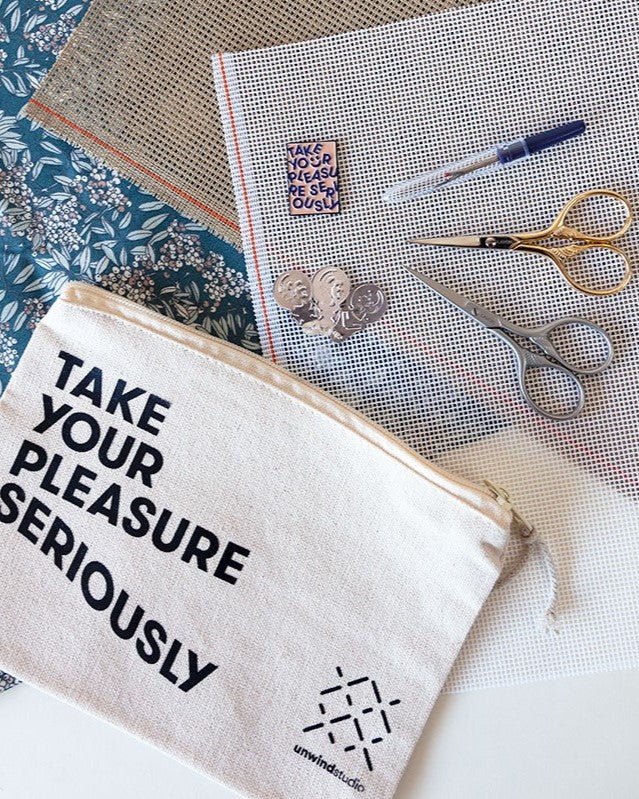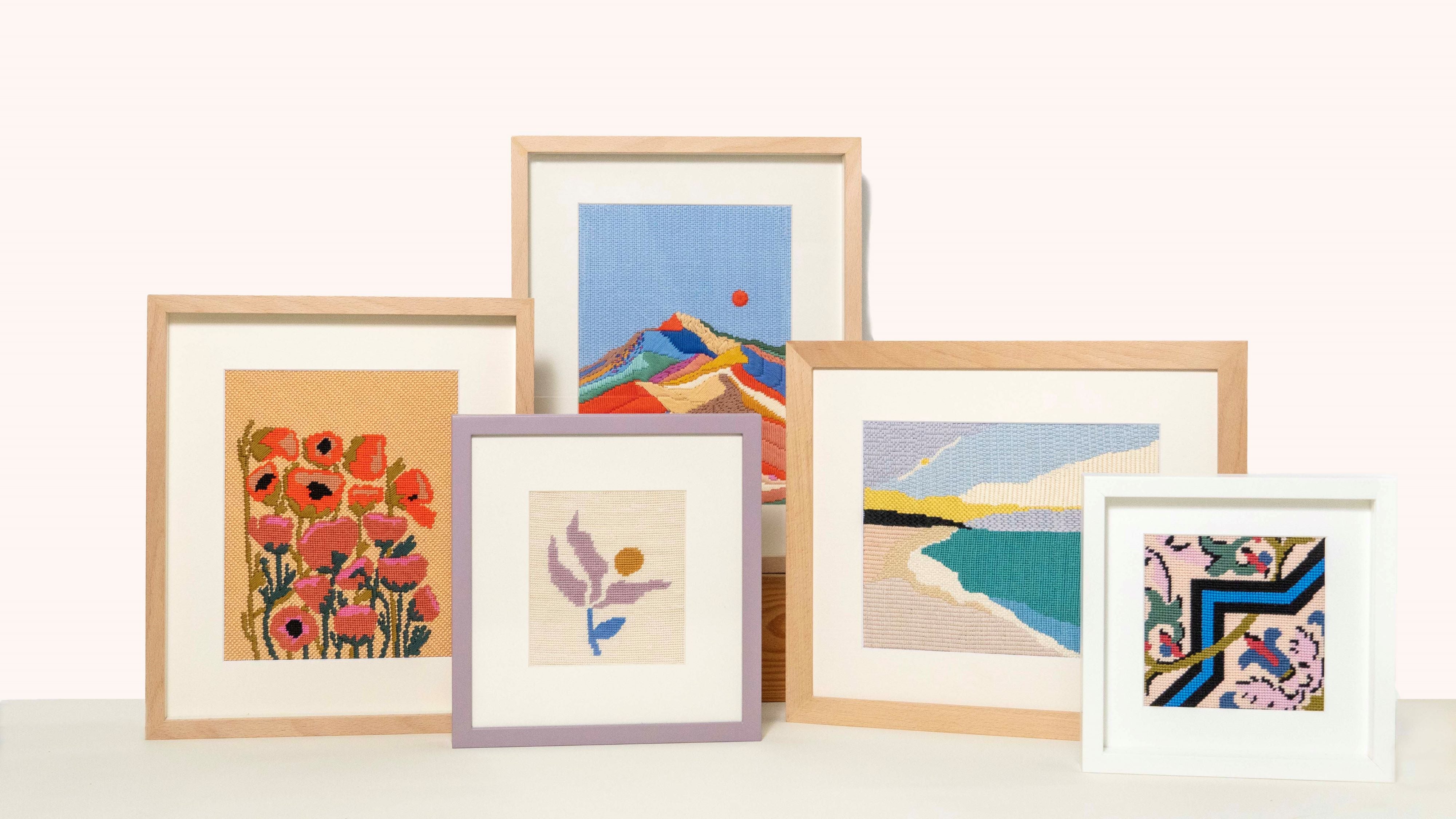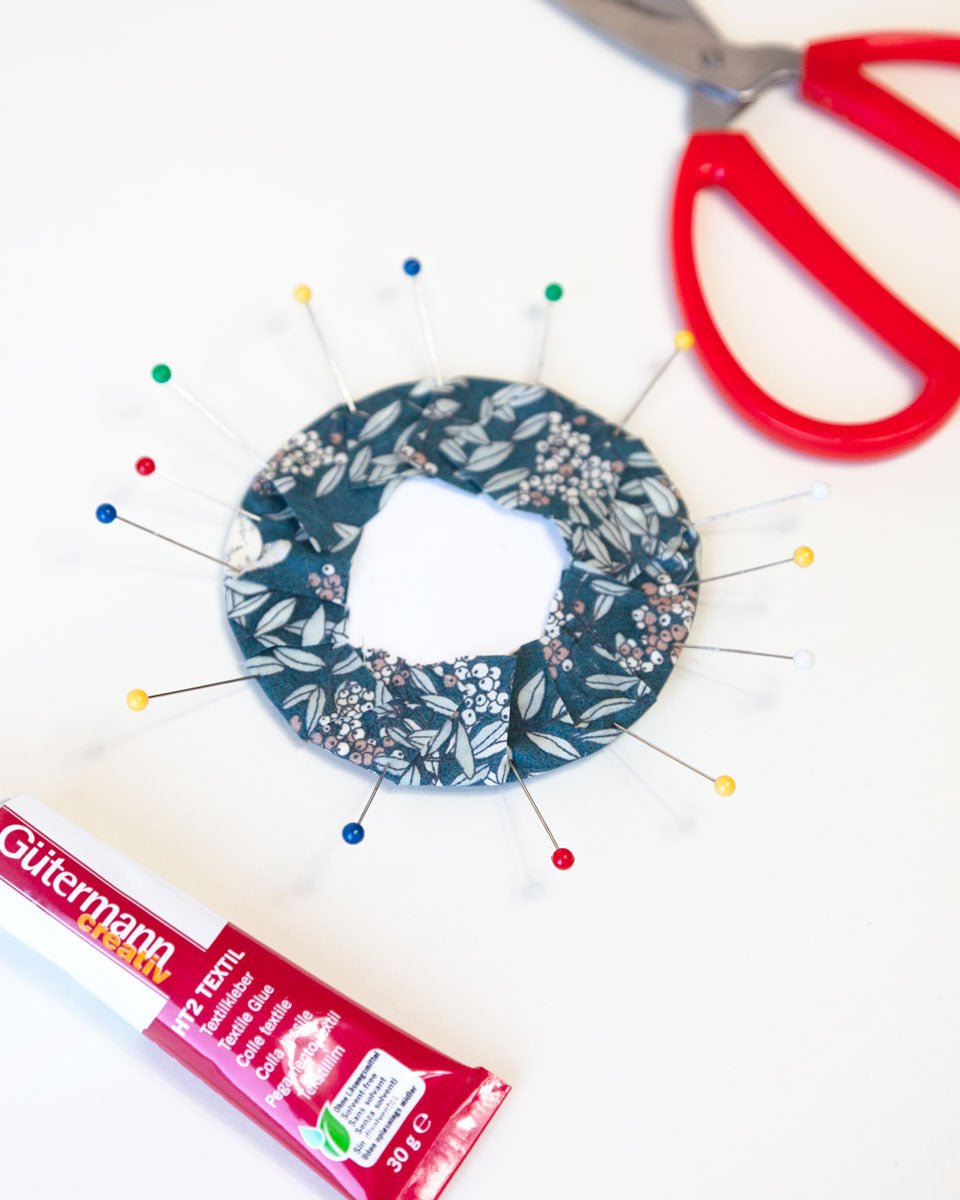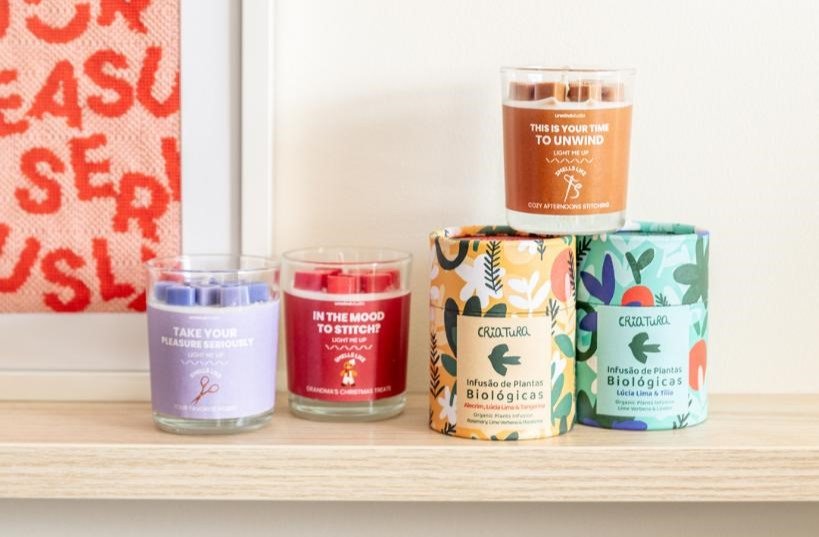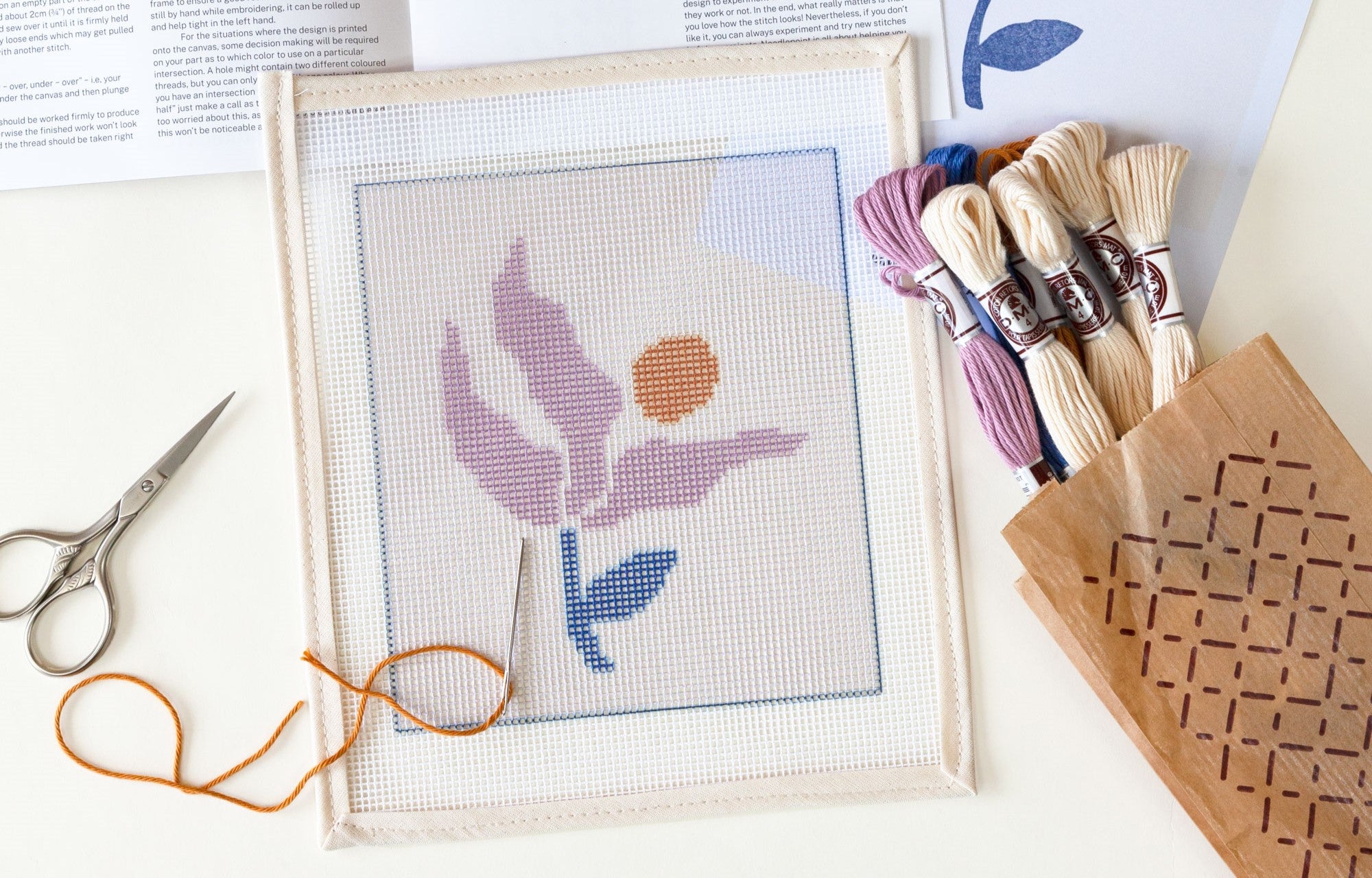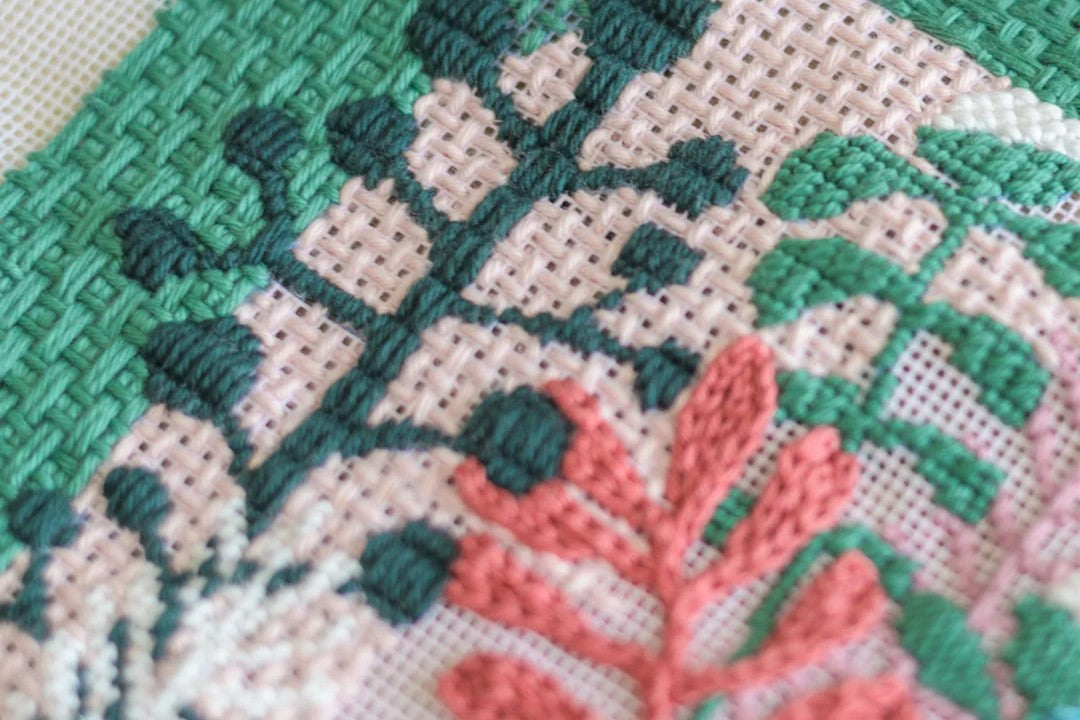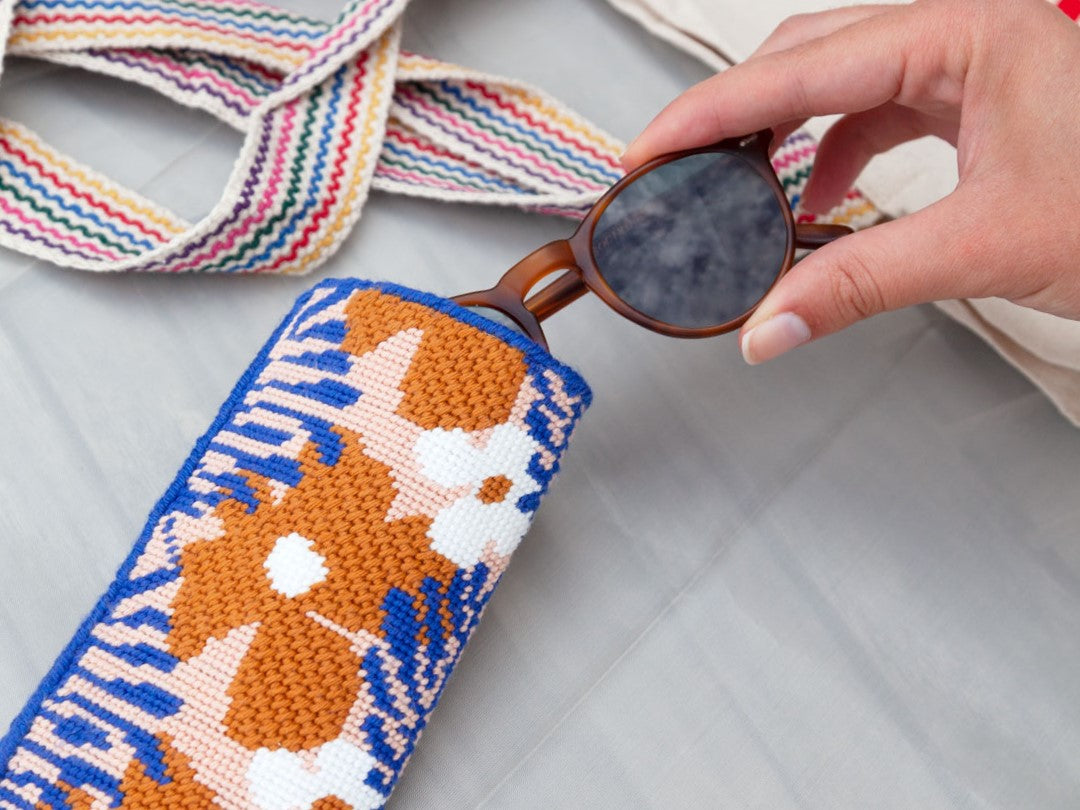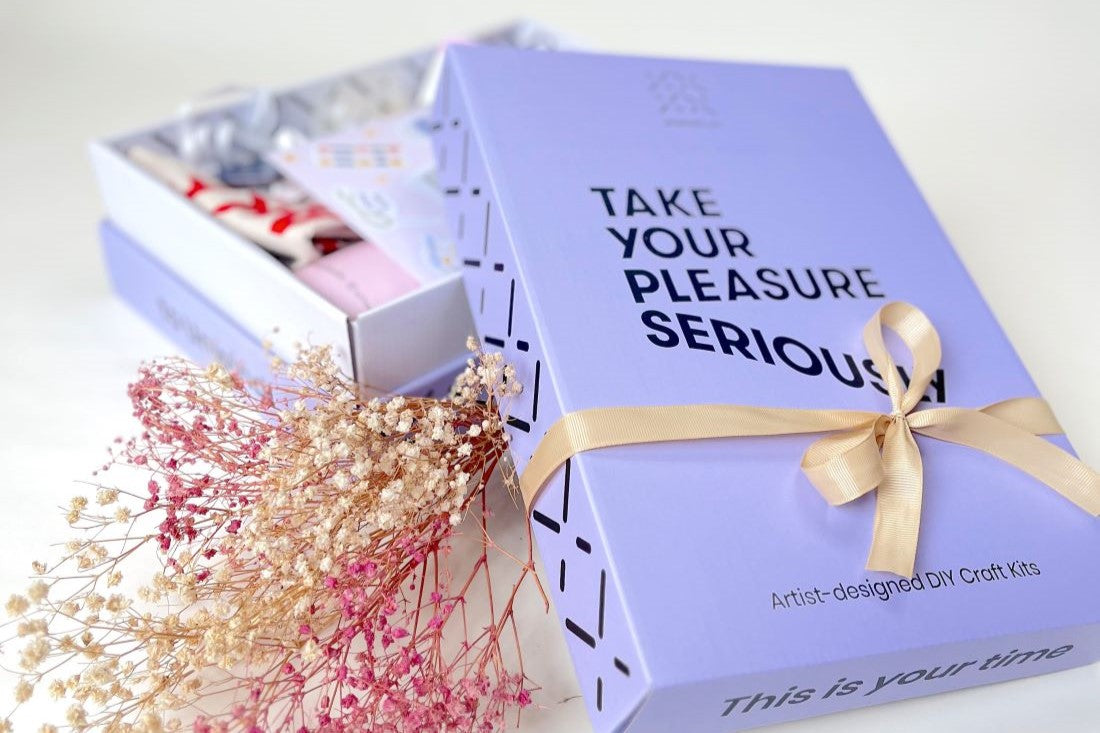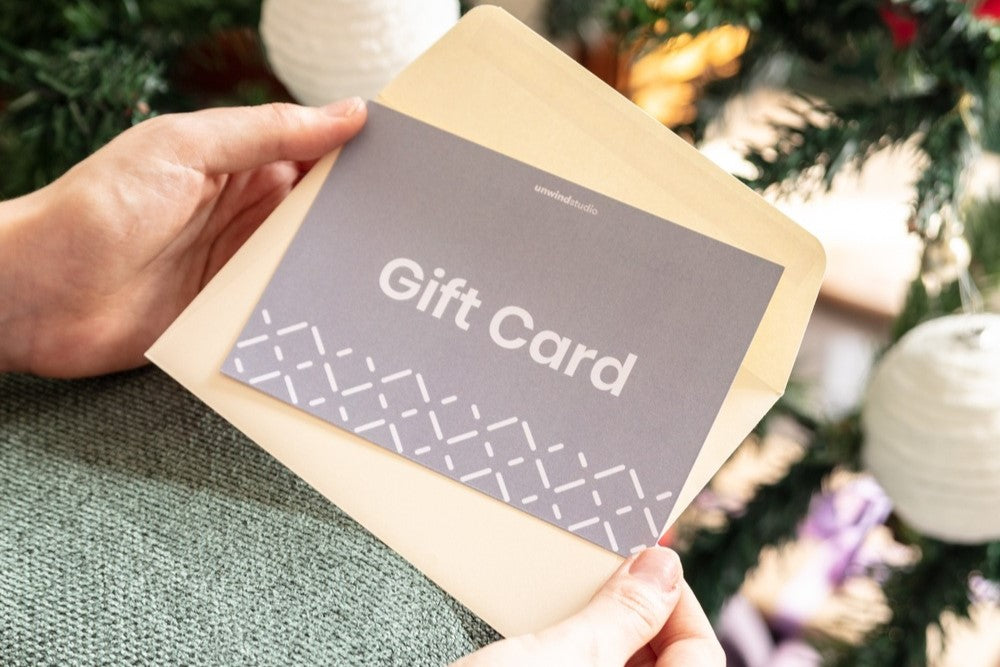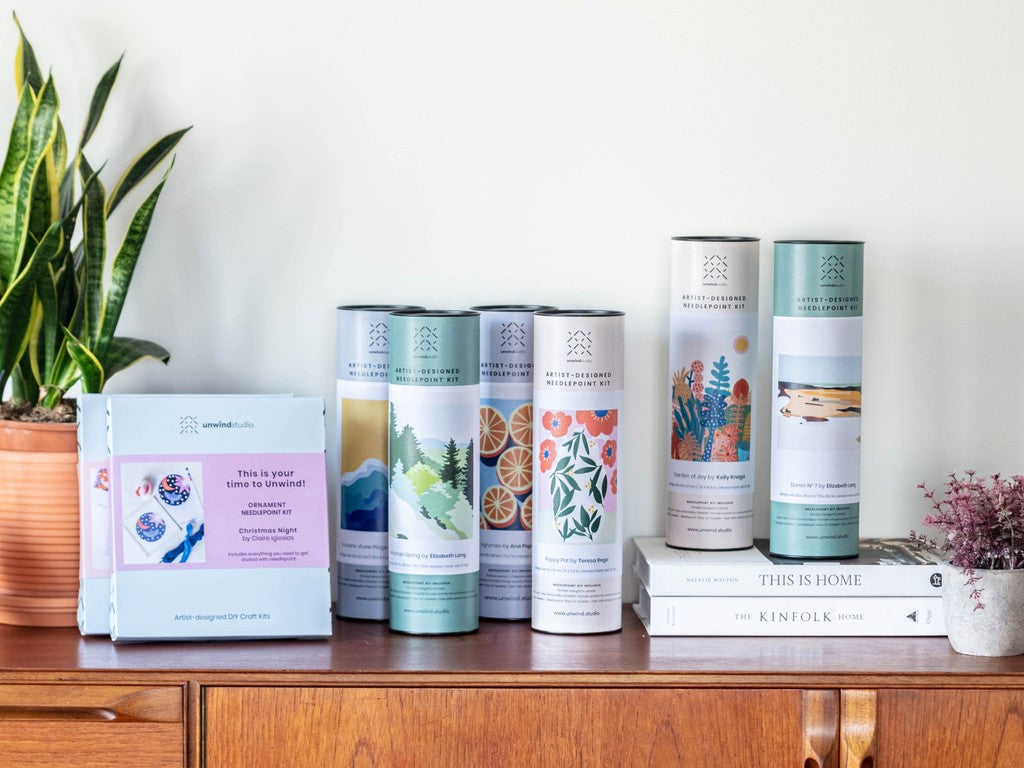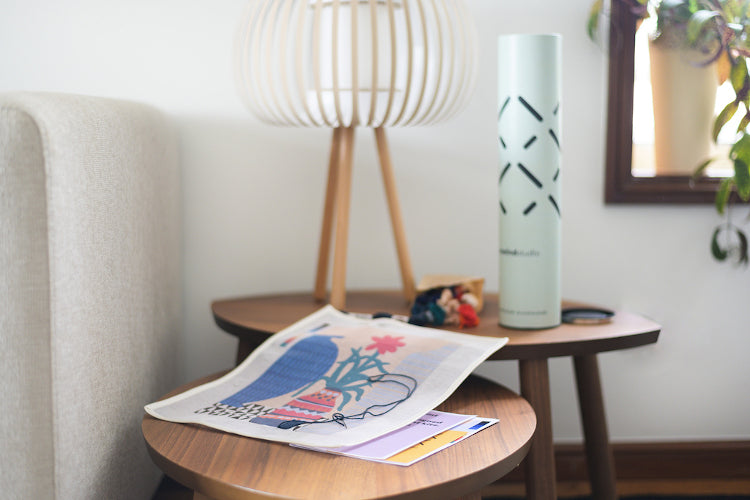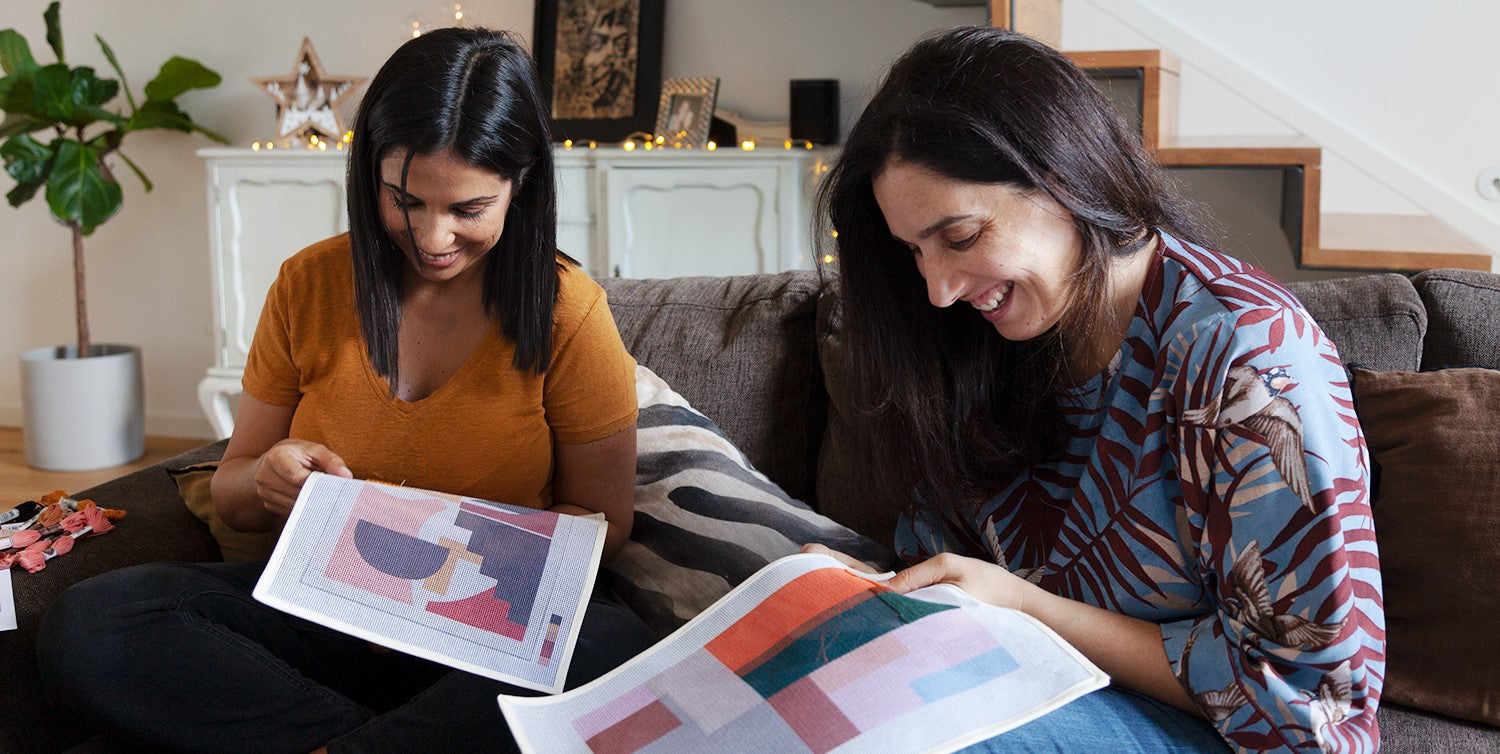Comment broder une toile imprimée au point de croix
La broderie au point de croix est une forme d'artisanat très appréciée qui vous permet de créer de beaux motifs complexes sur une toile à l'aide de fils colorés. Bien que la broderie au point de croix soit généralement simple, les choses peuvent devenir un peu plus difficiles lorsqu'il s'agit d' intersections de plusieurs couleurs .
Dans cet article de blog, nous vous guiderons tout au long du processus de couture d'une toile à broder avec des intersections de couleurs, vous aidant à obtenir une pièce finie époustouflante qui met en valeur votre expertise en broderie.
Qu'est-ce qu'une intersection de couleurs dans Needlepoint ?
Une intersection de couleurs se produit lorsqu'un trou de canevas de broderie partage deux couleurs , au lieu d'en avoir une seule, ce qui rend parfois difficile de décider avec quelle couleur broder. Dans l'exemple présenté ci-dessous, nous avons des intersections de rose et d'orange dans les mêmes trous de canevas, et nous allons vous apprendre comment résoudre ce doute lors de la broderie !

Tutoriel vidéo sur la broderie au point de croix multicolore - Débutant
Si vous êtes débutant, nous vous recommandons d'opter pour des toiles adaptées aux débutants et de regarder ce tutoriel dans lequel nous utilisons notre kit de broderie au point de croix pour débutants Sunny Sunday comme exemple pour vous aider !
POINTS CLÉS À RETENIR
- Les décisions auxquelles vous serez confronté au cours du processus se résument en réalité à trois choses :
- Goût personnel
- La couleur du fil que vous choisissez en premier
- Cohérence avec la conception originale
Tutoriel vidéo sur la façon de broder des intersections multicolores - Toile de point de croix avancée
Lorsqu'il s'agit de toiles de broderie plus avancées, vous pouvez avoir des doutes sur les décisions à prendre lorsque vous travaillez sur votre projet.
Nous avons préparé ce didacticiel vidéo en utilisant notre kit de broderie au point de croix à motifs floraux contemporains pour vous aider à comprendre certains des défis auxquels vous pourriez être confronté avec un design plus complexe :
- Comprendre le modèle de broderie au point de croix : comprendre la complexité du modèle à l'avance vous fera gagner du temps et évitera les erreurs pendant le processus de couture .

- Nous allons commencer cette fleur en brodant cette première ligne avec le fil orange. Dans ce point (1) , les trous sont majoritairement orange, mais le trou suivant (2) est une intersection orange et rose , nous avons donc décidé d'utiliser de l'orange pour conserver le motif en courbe.

- Comme vous pouvez le voir ci-dessous, ici les trous sont complètement roses (3) , mais les trous à côté (4) sont à nouveau une intersection , et une fois de plus nous avons décidé de le broder en orange pour être cohérent avec notre choix initial et avec le design.

Comment coudre des intersections de couleurs dans de très petites zones
Certains modèles peuvent avoir de petites intersections de couleurs qui font partie des détails de l'œuvre d'art, cela peut être délicat, mais nous vous expliquerons comment y faire face avec notre exemple pratique.
Conseil de pro : il est préférable de broder d'abord les petits détails , surtout s'ils sont d'une couleur de fil plus claire qui peut être tachée par les plus foncés !
Conseil de pro n°2 : dans ce cas, il est utile d’avoir l’ impression d’art originale pour vous guider.
- Dans cette première petite zone blanche, il est clair que vous pouvez faire deux points , mais il peut être difficile de savoir dans quels trous faire les points , ici nous montrons les deux options (5 ou 6) :

- C'est ainsi que nous avons décidé de le faire, mais c'est un choix totalement personnel !

- Dans cette zone blanche, l' inclinaison du motif est opposée à la direction du point (7). Mais vous pouvez continuer à broder de la même manière que vous avez brodé les zones blanches précédentes (ligne horizontale), car cela n'affectera pas le résultat (8).

- Une autre option consiste à simuler l'inclinaison en modifiant la position du deuxième point pour obtenir une ligne diagonale. (9) En faisant cela, nous avons laissé un espace entre les points blancs , qui serait ensuite rempli d'orange.
- Mais comme cela pourrait paraître un peu bizarre et que les deux points semblent séparés , nous pouvons faire un point blanc supplémentaire au milieu et créer un effet « triangle ». (10)

- Il ne vous reste plus qu'à suivre les mêmes critères pour le reste du dessin et choisir de broder ce qui ressemblera le mieux à l'œuvre originale , comme ceci :

Des décisions différentes, le même beau résultat
- Commencer avec le fil vert est ici facile puisque le sens du point suit parfaitement l'inclinaison du motif.

- Ensuite, nous sommes confrontés à une autre décision sur les intersections de couleurs : si nous faisions le point sur l'intersection médiane des couleurs à gauche (11) , nous perdrions l'effet rond du cercle vert.
- Nous avons donc décidé de ne pas faire le point à cette intersection et de simplement commencer à coudre la ligne au-dessus (12 et 13).

- Il faut aussi faire attention aux « besoins » du dessin. Ici, il faudra faire de la place pour le rose qui sera autour du centre vert, il faudra donc anticiper les points que vous devrez faire avec le fil rose.

- Pour maintenir le cercle, vous pouvez faire un point supplémentaire. Ici (14) nous l'avons fait à l'intersection qui nous semblait la plus logique. Mais si vous deviez faire cette deuxième version (15) , le cercle serait également très beau au final !

POINTS CLÉS À RETENIR :
Soyez cohérent avec les choix de couleurs aux intersections tout au long du processus, mais prenez également des décisions qui ont du sens avec la conception originale.
Toile imprimée au point de croix avant et après

Autres exemples du même design :

Comme vous pouvez le constater, ce sont toutes des approches très différentes du même motif. Alors n'oubliez pas : aucune toile de broderie ne sera identique une fois terminée ! C'est une partie de la beauté de la chose, alors ne vous en faites pas trop :)
En conclusion...
Les toiles imprimées au point de croix peuvent parfois être perçues comme difficiles ou intimidantes à broder, mais vous pouvez obtenir des résultats époustouflants avec de la patience et de la pratique, en suivant ce que vous pensez être le mieux pour votre projet et ces conseils que nous avons rassemblés . Si vous êtes curieux d'en savoir plus sur les différences entre les toiles imprimées et les toiles peintes à la main, nous avons un article de blog consacré à ce sujet.
Les toiles imprimées sont une option incroyable pour les amateurs d'artisanat grâce à leur prix abordable ! La broderie au point de croix est un excellent passe-temps, mais elle peut aussi parfois être coûteuse, donc si vous êtes intéressé à rechercher des options plus abordables, jetez un œil à notre guide pour trouver une broderie au point de croix abordable !
Bonne couture**


